UpdateIncidentInbound Fields
We will utilise the Field & Field Map records to configure the Message Scripts for the UpdateIncidentInbound Message.
Copy Field Maps
Some Field Maps should already have been copied for this Integration whilst following the Outbound Incident Guide. Those that aren't will need to be copied. The Field Maps we shall use for our UpdateIncidentInbound Field records are:
Message Header
String
To copy the Message Header Field Map, navigate to the 'Field Maps' icon.
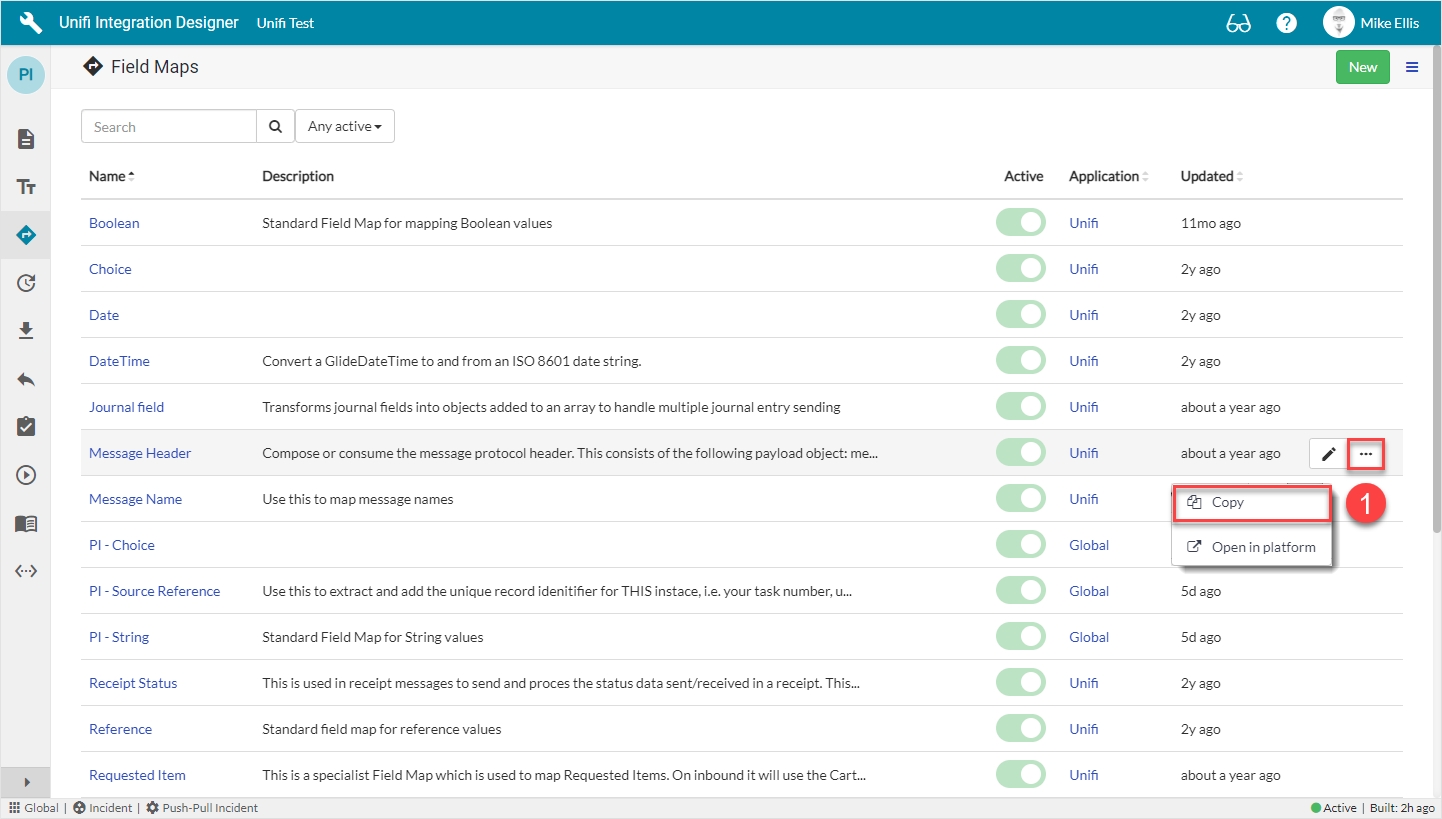
Click on the ellipsis to the right of the Message Header Field Map & then click Copy.
Copy Field Map Modal
The fields to edit for the Copy Field Map modal are as follows:
Name*
The name of your field map. (If left unedited, it will append the word 'Copy' to the existing name.)
<Your Name>
*Name: We have chosen to prefix the existing Field Map Name with the initials of our Integration (you are free to choose any appropriate means of identifying/differentiating).
Your Copy Field Map modal should look like this:
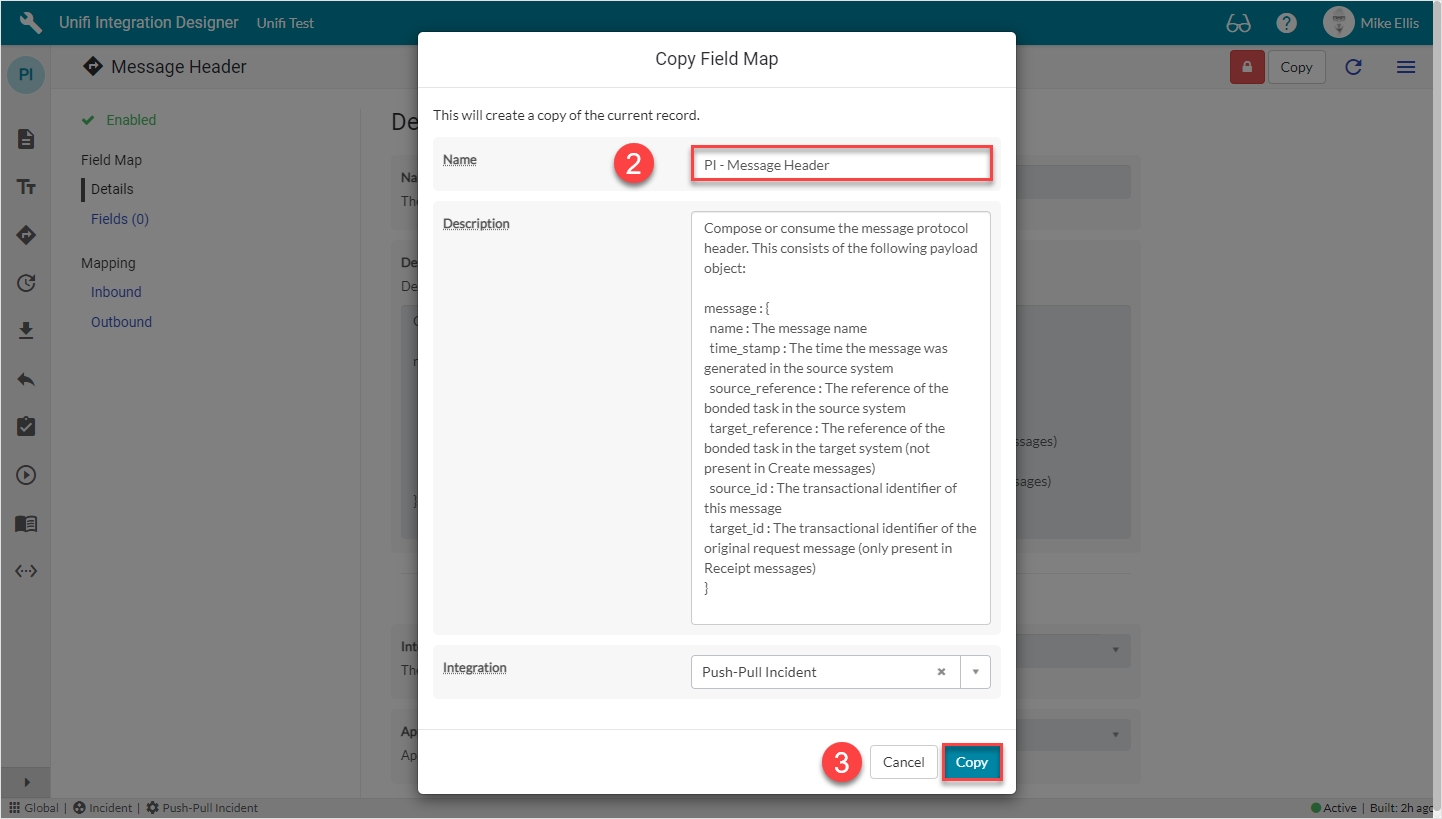
Click Copy.
You will be redirected to the Details page of the newly created Field Map.
If necessary, repeat the process for the String Field Map.
Field records can represent the handling of two categories of data: either a data object which carries transaction specific data (e.g. name, time stamp, source id etc.), or a field element on the bonded record (e.g. Short description). We will begin by configuring a Field record to deal with the transaction specific data.
Field: message.header
Back in the UpdateIncidentInbound Message, navigate to Message > Fields. Click New.
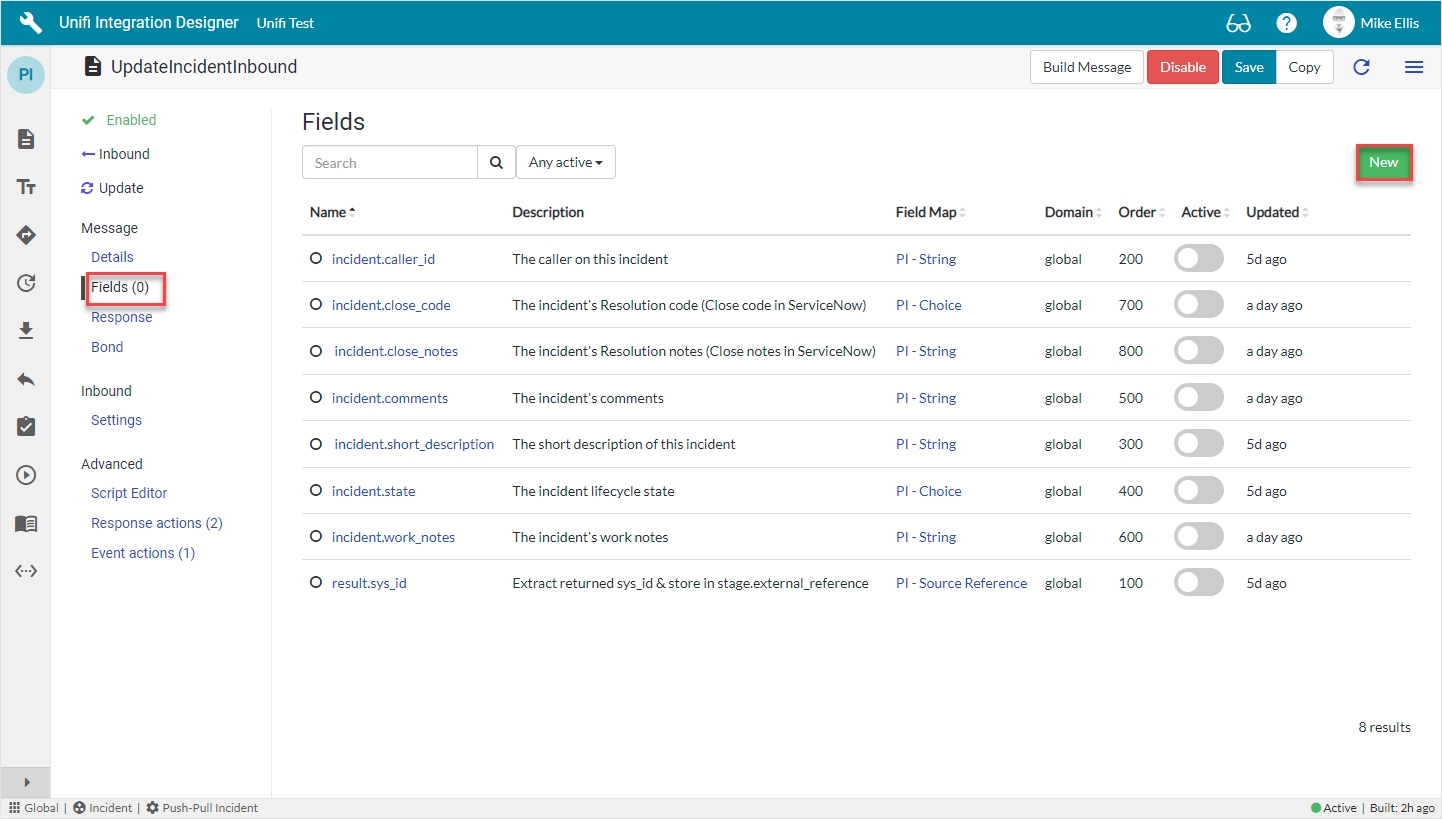
The fields to be configured for our message_header New Field modal are as follows:
Message*
The Message this Field record is linked with.
'UpdateIncidentInbound'
Description
Describe what this field is for and any specific details that might help you in future.
‘The protocol message header’
Active*
Set to true to use this Field record for processing.
<true>
Field map
The Field Map this Field record is linked with.
'IS - Message Header'**
Map to field*
Use this Field record to represent a field on a source/target table.
<false>
Path
Where in the payload the data will be placed.
'message'
Property
The property in the payload the data will be written to.
'header'
Inbound*
Set to true to use for inbound Messages.
<true>
Outbound*
Set to true to use for outbound Messages.
<false>
*These fields are automatically defaulted to true, or automatically populated.
**Field map: Value may vary. Choose the copy Field Map you created for your Integration.
Your 'message.header' New Field modal should look like this:

Submit the record.
You will be redirected back to the Fields page of the UpdateIncidentInbound Message.
Fields & Field Maps
Depending on your requirements, you will need to create Field records for each of the relevant Incident record field elements you wish to map. As we have only chosen to include the short_description & description elements in both the Setup script & Response script of the Poll Processor, this Guide will focus on those two. If you wish, however, you are free to configure other Field records as required (ensuring you also define them in both the Setup Script & Response script of the Poll Processor).
For a full description of the available Field Maps, please see the relevant page in our technical documentation.
The table below lists the Incident record field elements we will map and the relevant Field Maps required to configure each Field record.
short_description
'PI - String'*
description
'PI - String'*
*Field map: Values may vary (dependent on your configuration of the copies). Choose the copy Field Maps you created earlier.
Field: incident.short_description
From the UpdateIncidentInbound Message, navigate to Message > Fields.
Your UpdateIncidentInbound Fields page should look like this:

Find the incident.short_description (Integration level) Field & set Active to true.
The empty circle icon next to the Field name turns green & contains a green ‘check’ (to indicate that Message level configuration exists for this Field) when we set Active to true. (The ‘Build Integration’ button became visible in the banner when we created the 'message.header' Field).
By setting the Active flag to true on the Integration level Field record listed on the Message, Unifi has automatically created the Message level counterpart.
Click to open the incident.short_description (Message level) Field to make a few minor changes.
The incident.short_description Field record opens to the Details page.
The following info message is also displayed (which can be closed):

Set Inherit to False.
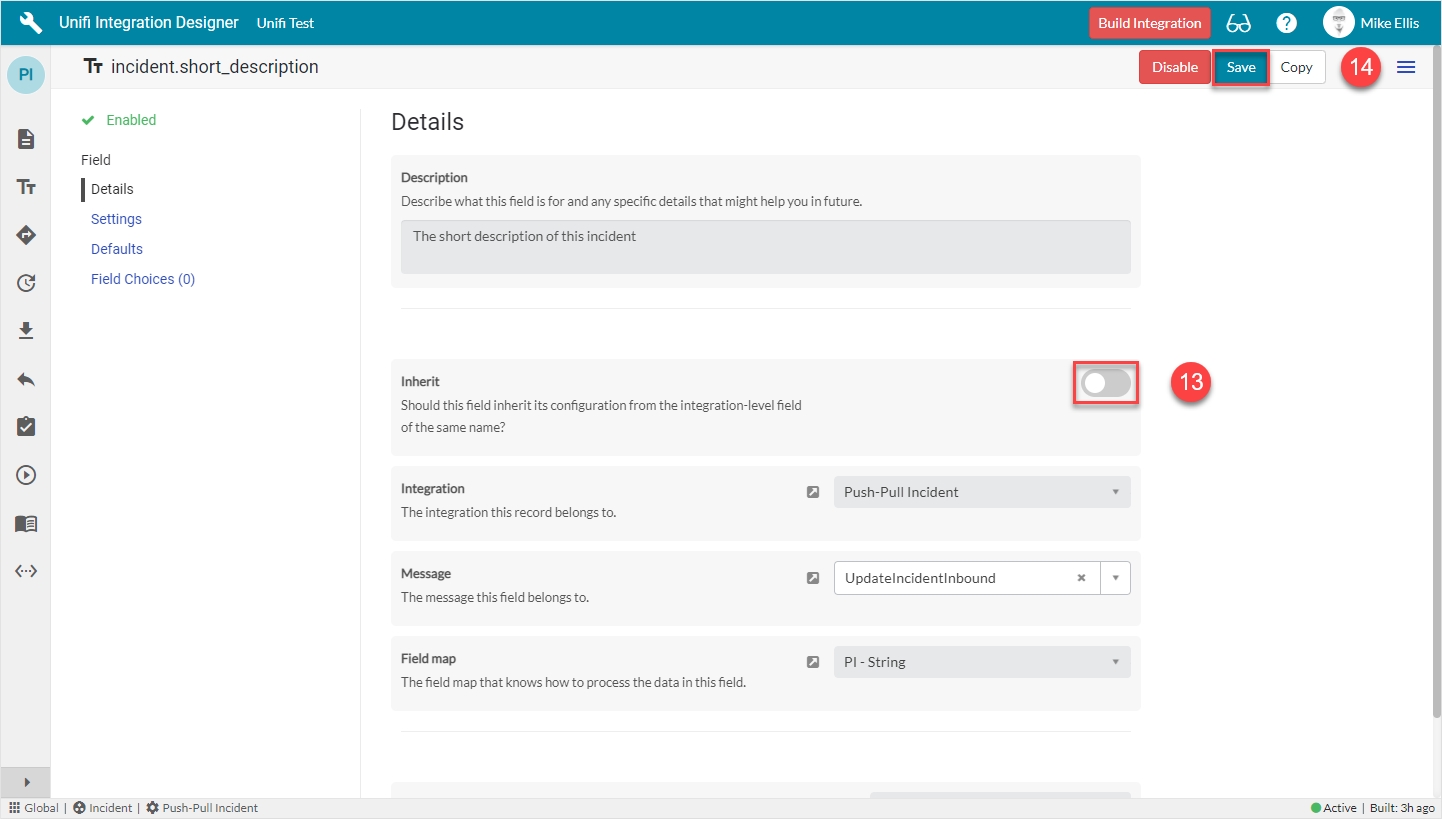
Save the record (the fields now become editable).
Navigate to Field > Settings.
Edit the incident.short_description Field record as follows:
Path
Where in the payload the data will be placed.
‘detail’
Inbound
Set to true to use for inbound Messages.
<true>
Outbound
Set to true to use for outbound Messages.
<false>
Your incident.short_description Field record should look like this:
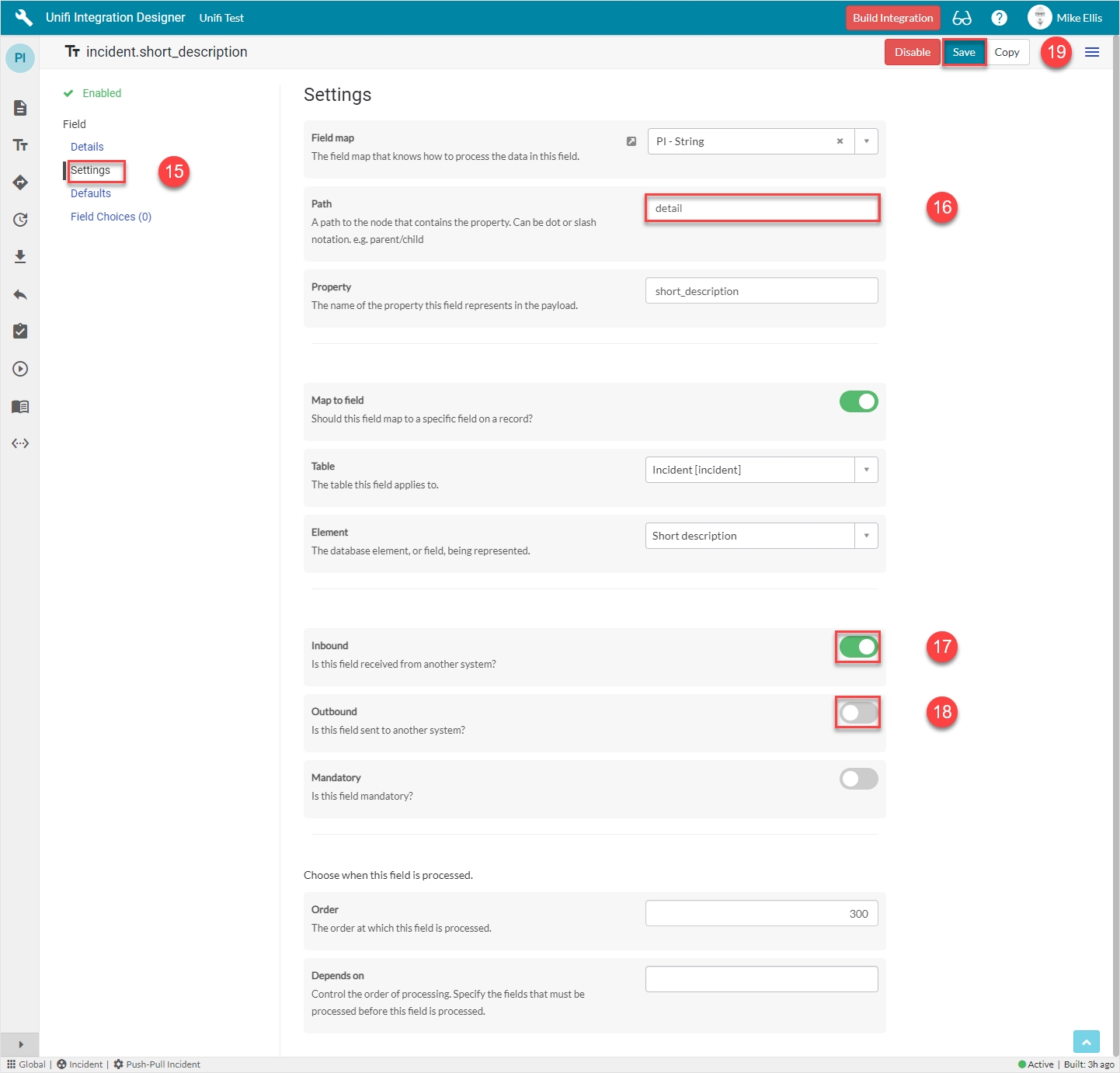
Save the record.
Field: incident.description
To quickly navigate to the UpdateincidentInbound Message from the Details page of the incident.short_description Field record...

...click the 'Preview' icon to the left of the Message field.
From the UpdateIncidentInbound Message, navigate to Message > Fields.

Click the ellipsis next to the incident.short_desscription Field record & click Copy.
The fields to edit for the Copy Field modal are as follows:
Element
The field on the source/target table this Field record is mapped to.
'Description'
Property*
The property in the payload the data will be written to.
Automatically populated
Description
Describe what this field is for and any specific details that might help you in future.
'The incident's description'
*This field is automatically populated.
Your 'incident.description' Copy Field modal should look like this:
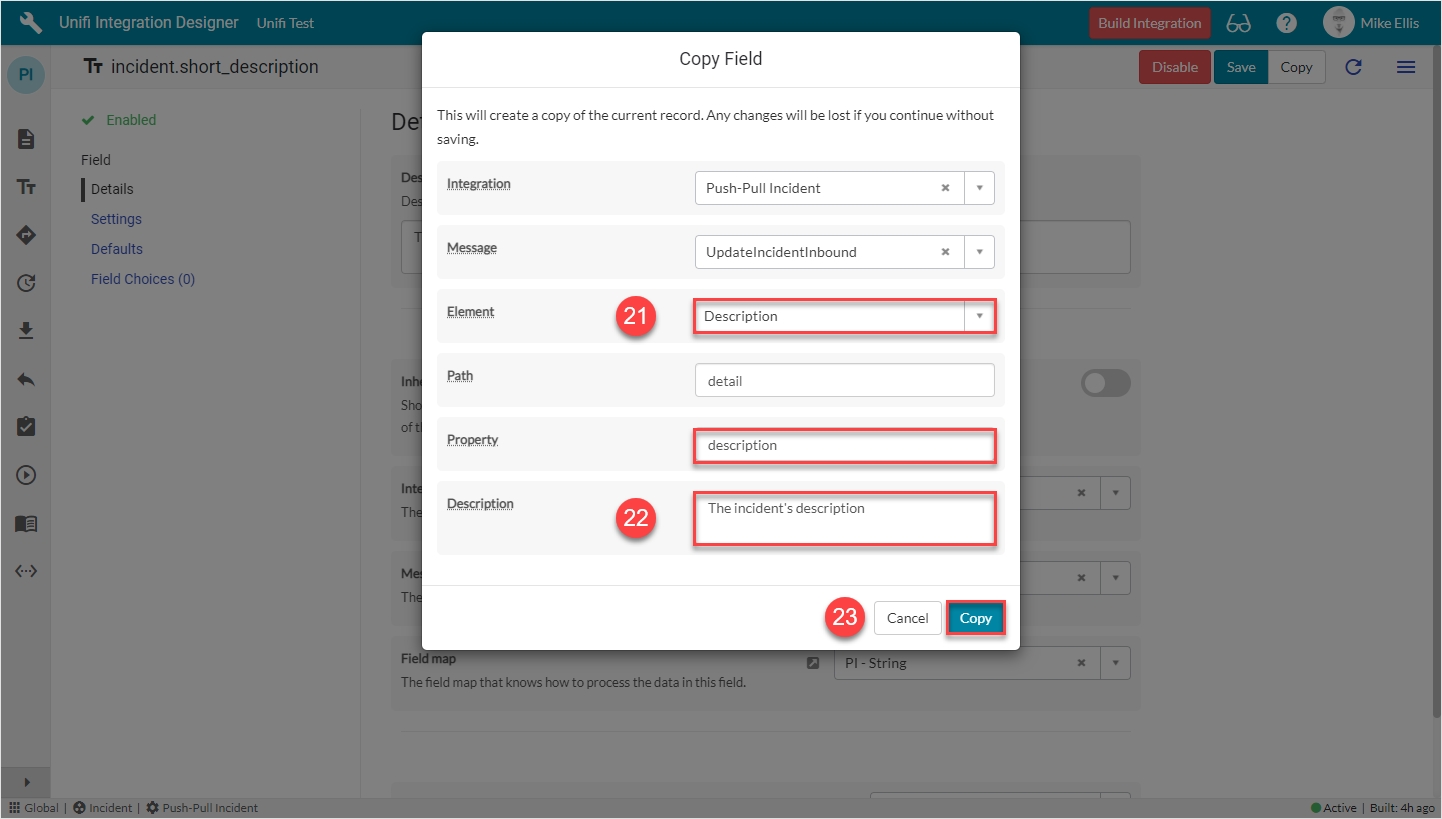
Click Copy.
You will be redirected to the Details page of the newly created incident.description Field record.
Build
Now that we’ve configured the Field records for the UpdateIncidentInbound message, we are ready to build our message scripts.
To quickly navigate to the UpdateIncidentInbound message from the Details page of the newly created incident.description Field record…

...click the 'Preview' icon to the left of the Message field.
The following Field records should now be in place for your UpdateIncidentInbound messsage:

Click on Build Message.
You will see the 'Message build successful' Info Message.

Navigate to Advanced > Script Editor.
Your Script Editor fields should initially look like this:
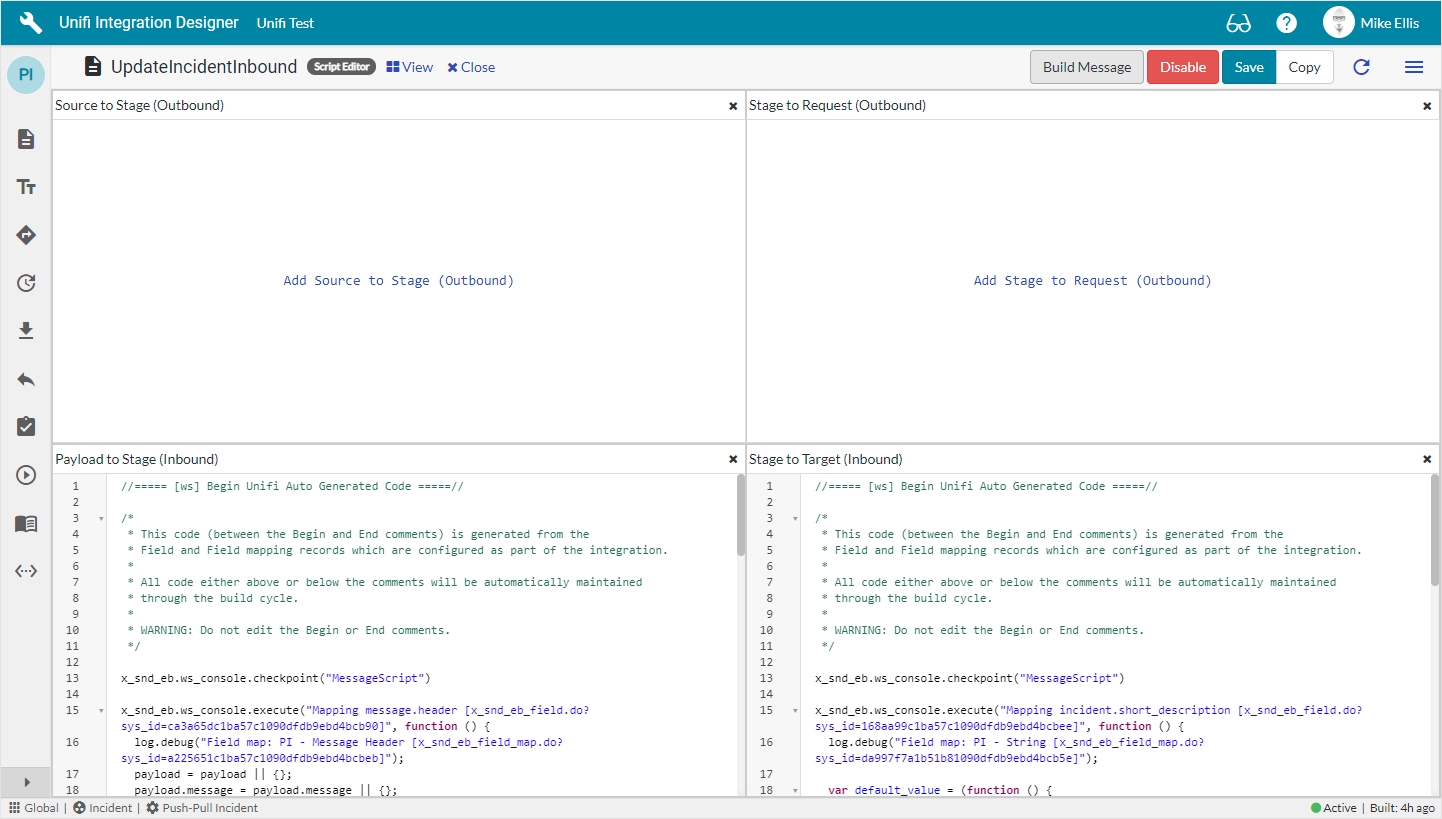
Navigate to View > Inbound to view the auto-generated code.

Your Script Editor fields should now look like this:

Message Scripts
The Message Scripts reflect the mappings as per this Guide. Your scripts might differ depending on which Fields you chose to map (& defined in the payload). We will look at the Message Scripts in turn.
Payload to Stage:
Your Payload to Stage Message Script should look like this:
Stage to Target:
Your Stage to Target Message Script should look like this:
Before we test, we need to make a few changes. The first is to our Integration - to allow for inbound Message Identification.
Was this helpful?
